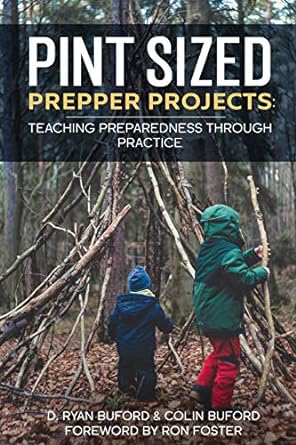[ARTICLE]: Elements of Survival 2: The Sacred Order
A quick review: In The Rule of 3 we know generally the following:
- 3 Minutes without Air
- 3 Hours without Shelter
- 3 Days without Water
- 3 Weeks without Food
- 3 Months without Love
- 3 Seconds without Hope
From this list of the Rule of 3 we will presume that in most survival-situations that oxygen is available, we will also presume that one will not be alone in a situation or is will not be for very long, meaning months at a time, and if you are reading this article it may be safe to presume that you also have the will, and thus, the hope to make it through any emergency situation, because you are doing research and seeking out more information to help strengthen your skill-sets thusly building confidence in yourself and abilities to survive.
So that leaves The Core Three Rules of the Rule of 3:
- 3 Hours without Shelter
- 3 Days without Water
- 3 Weeks without Food
We shall also presume that for immediate-survival these 3 rules should be our focus...and in actually only the first two deserve concentrated focus because human beings can survive longer without food than water, or exposure to the elements without shelter. But, we will use these core three from here on out to help define our priorities in a survival-situation. See Elements of Survival 1: The Rule of 3 article here >> http://www.theurbanabo.com/articles.php?aid=13 for further review.
Shelter
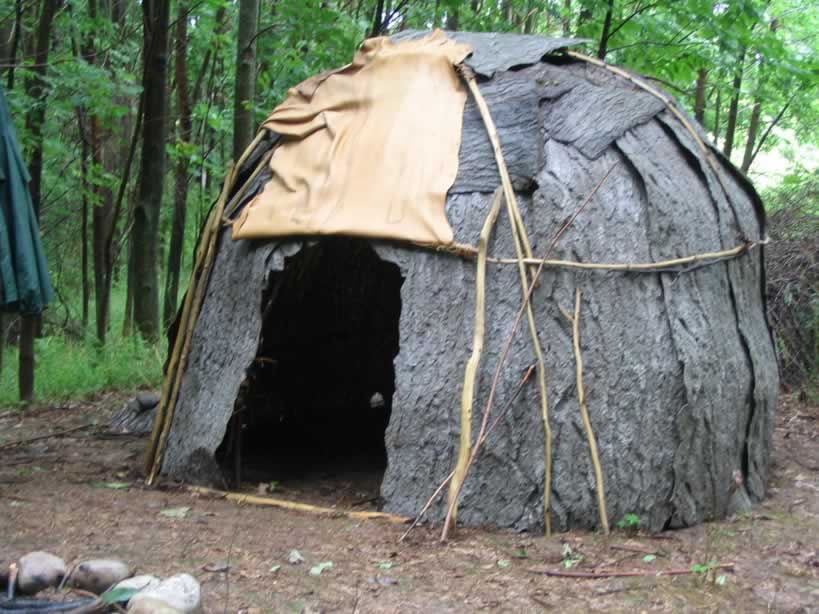 Shelter is first in The Order, because according to The Rule of 3 spending 3 hours or more in the cold, heat, or wet, out in a hurricane, tornado, blizzard, sand storm, etc...can get you killed. Unlike other animals humans have not evolved to have thick hides and/or fur to withstand the elements. Even still most animals have sense enough to get out of the rain. Please note that the observation and mimicking of animals is a key to making it though a survival-situation in Nature.
Shelter is first in The Order, because according to The Rule of 3 spending 3 hours or more in the cold, heat, or wet, out in a hurricane, tornado, blizzard, sand storm, etc...can get you killed. Unlike other animals humans have not evolved to have thick hides and/or fur to withstand the elements. Even still most animals have sense enough to get out of the rain. Please note that the observation and mimicking of animals is a key to making it though a survival-situation in Nature.
The fact that we do not grow insulating coats of hair all over our bodies [well most of us don't ;)] to shield us from the elements to help keep us cool, or warm, or dry has caused us, Homo-Sapiens, to need to cover our bodies with clothing. This was comprised originally from natural materials such as skins and hides, or woven, spun or felted fur, or vegetable fibers to synthetic materials to protect us. In fact, think of the clothing on your back as a form of shelter.
However, sometimes body coverings are not enough, so shelter can take simple forms such as seeking it under large leaves or the canopy of the trees, to burying oneself in the mud to hide or escape biting insects, burrowing into the snow, quick construction debris-huts (see the debris-hut tutorial here >> http://www.theurbanabo.com/howto_2.php?hid=1 , on to more elaborate forms such as mud or adobe huts, bark wigwams, tipis, thatched shelters, and log cabins.
Regulation of our core body temperature is a primary necessity needed to stay healthy and continue living, and shelter is assurance that this will continue to happen in a survival-situation.
Fire
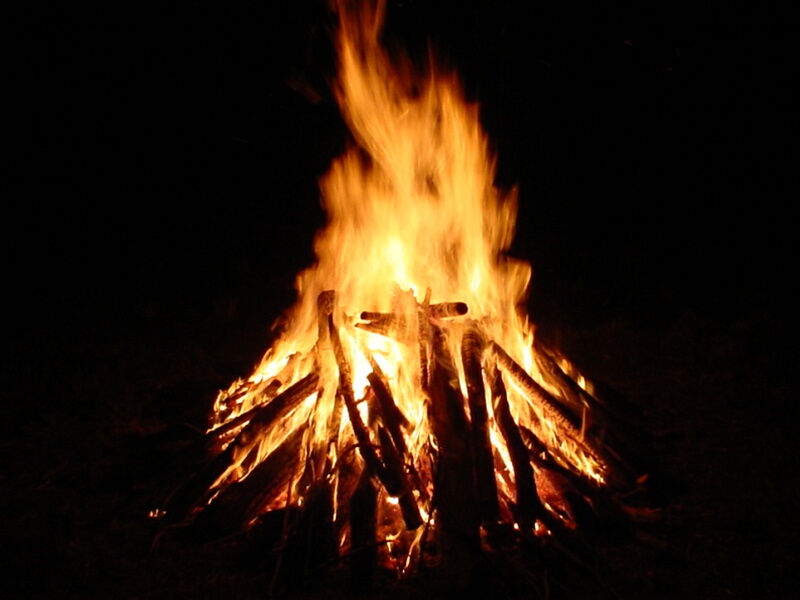 Second in The Order is Fire. In fact, it is closely related to the first priority of shelter because in many cases fire can be a form of shelter, especially if regulation of core body temperature is of immediate importance.
Second in The Order is Fire. In fact, it is closely related to the first priority of shelter because in many cases fire can be a form of shelter, especially if regulation of core body temperature is of immediate importance.
Fire is the tool of tools. Meaning, besides being a tool in and of itself, fire makes other tools possible. Besides warmth, fire can ward of insects and threatening animals, is a source of light - source of comfort igniting hope and resolving the will to carry on, it can be used to signal for help, cauterize wounds, and cook food; Looking at fire critically, fire can be used to process raw clay to make fire-proof earthenware vessels to aid in one of fire's most important uses...water disinfection!
Water
 H2O is the third priority in an immediate-survival-situation. According to the Rule of 3 most people only last about 3 days, although there have been records of people surviving a little over a week in extreme conditions without hydration.
H2O is the third priority in an immediate-survival-situation. According to the Rule of 3 most people only last about 3 days, although there have been records of people surviving a little over a week in extreme conditions without hydration.
The human body is made up of about 75% water. The Earth is covered 75% by water, although it is quite salty. Water is essential to life on our planet, and in places with no water at all does life not exist - at least as we understand life to be. In many survival situations obtaining potable (drinkable) water is not hard to do. The problem arises from the life-giving and sustaining properties of water. Many bodies of water are loaded with harmful bacteria and parasites so the direct drinking of it can lead to contamination, infection, or infestation, and thus becoming sick. These sorts of contamination can lead to vomiting and diarrhea which causes the body to loose vast amounts of water very quickly, leading to dehydration and death -the irony of trying to get or stay hydrated if one isn't careful.
This is where fire comes in. In the Sacred Order after the need of shelter has been met, and fire - the tool of tools, has been procured, fire can be used to heat water to kill and, thus, disinfect making it safe to drink. In fact, Water temperatures above 160 degrees Fahrenheit kill virtually all pathogens within 30 minutes, including bacteria and the two prime backcountry nemeses: giardia and cryptosporidia. At 185 degrees Fahrenheit, they're dead in just a few minutes. Almost nothing can survive sea-level boiling temperature (212degrees F) for any length of time, though a few pathogens like botulism can persist at even higher temperatures [1].
One thing to keep in mind though, is that some bodies of water may be so chemically contaminated with salt, alkaline, or other chemicals, natural or man-made that it is not drinkable at all even if boiled
Food
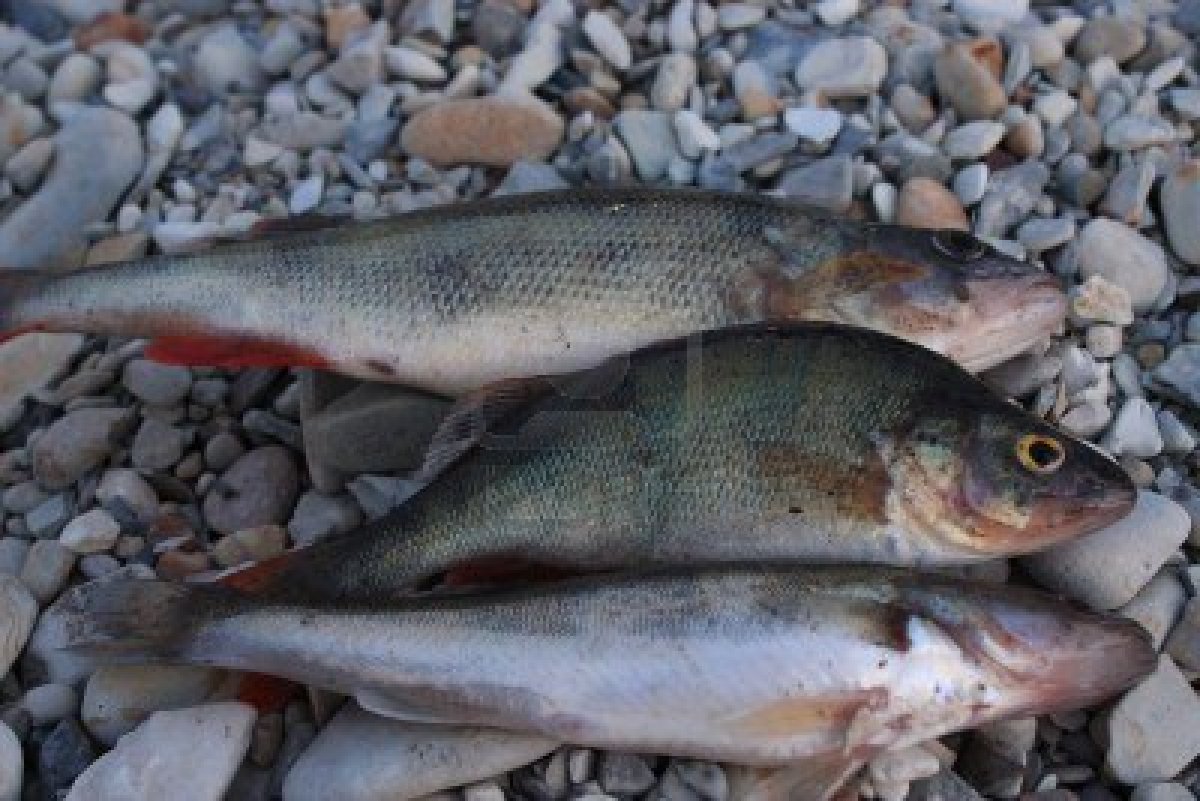 Hunger-strikers have been known to not eat for over 2 months, a pretty long time to go without food. So according to the Rule of 3, three weeks is not almost 3 months, but it shows that as far as immediate-survival is concerned food is not a top priority.
Hunger-strikers have been known to not eat for over 2 months, a pretty long time to go without food. So according to the Rule of 3, three weeks is not almost 3 months, but it shows that as far as immediate-survival is concerned food is not a top priority.
Not having fire there is no way to prepare any food procured in a way we can ingest it safely, and without water eating food becomes difficult, let alone being able to wash the food and assist as a means of preparing any plants or animals harvested. I am not saying food is not important. But as it pertains to urgent or immediate survival the first 3 priorities must be met first since we cannot live as long without them.
*Cordage
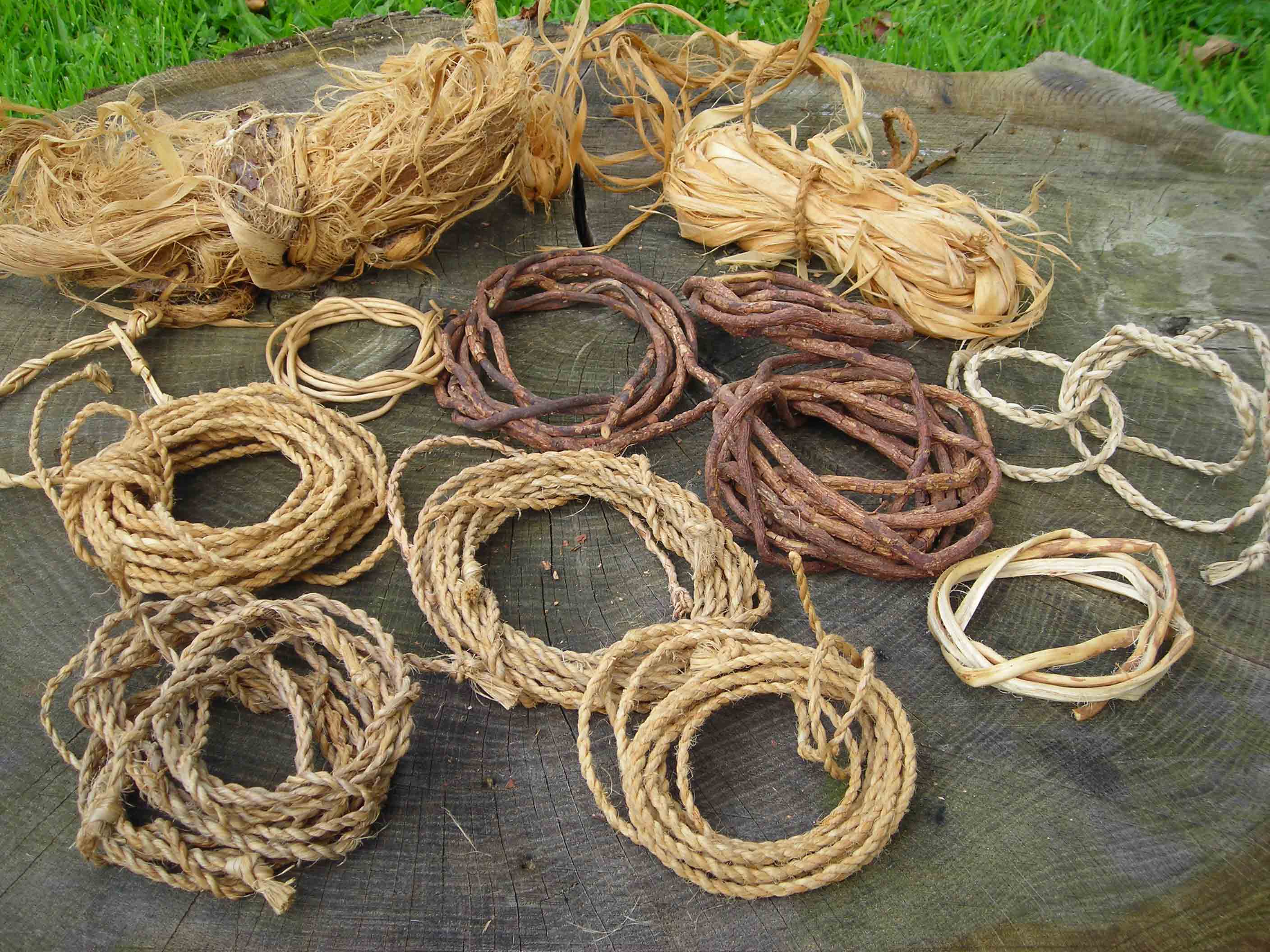 String, or rope is generally added to The Sacred Order in a tongue-in-cheek sort of way. There is a multitude of things that can be done with, or made easier in a survival-situation with a length of good durable cordage. So much so it is deemed almost a necessity in some circles. So it is sometimes added, although jokingly, because it really isn't a determining factor in immediate-survival situations.
String, or rope is generally added to The Sacred Order in a tongue-in-cheek sort of way. There is a multitude of things that can be done with, or made easier in a survival-situation with a length of good durable cordage. So much so it is deemed almost a necessity in some circles. So it is sometimes added, although jokingly, because it really isn't a determining factor in immediate-survival situations.
It should be noted that having cordage, even duct-tape, can aid in the making of shelter, the making of fire, making traps, or as a binding for weapons for the procurement of food. So cordage for use by humans is a very handy thing to have in a situation.
Cordage is only as good as your ability to use it...so get to KNOW YOUR KNOTS. Knowing how to knot and bind can really make a difference. Even a hunting weapon such as a sling can be made with a single piece of rope, click here >> http://www.theurbanabo.com/howto_2.php?hid=55for the One-String Sling tutorial.
The Sacred Order is Not Written in Stone
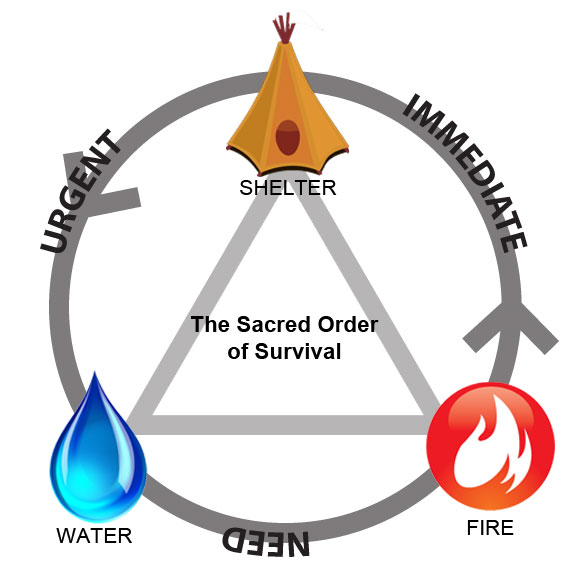 This order of priorities in is pure form is really just a guideline. If you find yourself in a situation, but are not suffering from an injury, dehydration, hypothermia (frostbite), or hyperthermia (heat-stroke). The Order can be shifted around based on urgent immediate need. For example, if you are stuck in a blizzard in your car you are already sheltered, so the next on the list is fire or warmth particularly if the engine has died or you are out of fuel. If in a similar situation you have both shelter, and fire (warmth) covered, but you may not be rescued or dug out for a few days then next on the list is water. Devising a means of melting snow/ice to drink may become a priority.
This order of priorities in is pure form is really just a guideline. If you find yourself in a situation, but are not suffering from an injury, dehydration, hypothermia (frostbite), or hyperthermia (heat-stroke). The Order can be shifted around based on urgent immediate need. For example, if you are stuck in a blizzard in your car you are already sheltered, so the next on the list is fire or warmth particularly if the engine has died or you are out of fuel. If in a similar situation you have both shelter, and fire (warmth) covered, but you may not be rescued or dug out for a few days then next on the list is water. Devising a means of melting snow/ice to drink may become a priority.
Or if you find yourself lost in the bush but it's 70-80 degrees and getting dark, and you suspect there will be no rain, tornadoes, or lightning storms your immediate need for survival may not be shelter necessarily but fire for a light source and a means to disinfect water - after all it's 70-80 degrees, one is bound to be thirsty.
So essentially, The Sacred Order can be shifted or re-prioritized to meet URGENTLY-IMMEDIATE-NEEDS in a situation. It is a general guideline not a hard and fast rule. Just keep in mind for our intents and purposes for this site and future articles, and based on my training and practices, when The Sacred Order is referred to it means:
Shelter
Fire
Water
Citation: 1). http://equipped.outdoors.org/2011/08/how-long-should-you-boil-water-to-make.html

